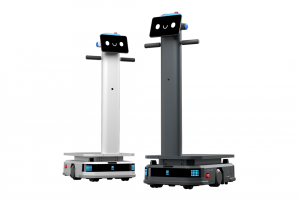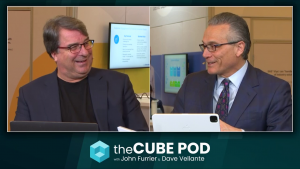Spectrum Reality
Now that a detente of sorts has been reached with Congressional efforts to muzzle some of the most egregious criminal sites on the Internet, attention came resume on some of the other pressing tech policy issues.The spectrum crunch was at the top of the agenda before ![]() the anti-crime discussion began in earnest in December (why is December always the time for monster tech policy issues?) and with all sides in agreement that Protect IP and SOPA can move forward without DNS filtering, it seems that attention will once again shift back to spectrum.
the anti-crime discussion began in earnest in December (why is December always the time for monster tech policy issues?) and with all sides in agreement that Protect IP and SOPA can move forward without DNS filtering, it seems that attention will once again shift back to spectrum.
The mobile network providers and the House Energy and Commerce Committee are on one side of the current spectrum auctions issue, arguing that the FCC needs guidance from Congress about incentive auction parameters, while the Senate and the FCC say that the Commission should have a free hand in designing the auction. An additional issue concerns the extent of the FCC’s power to force broadcasters to different frequencies that will make more spectrum available for auction (the “repacking” issue.) A third issue concerns the forced sharing of channels by broadcasters, most of whom don’t require the full allocation they were given in the DTV transition. A number of broadcasters transmit 4 or 5 separate programs at a time, and all but the first tend to be low quality programs with limited appeal.
There’s plenty of spectrum available for current needs in rural areas, so the crunch is an urban phenomenon. Broadcasters have two reasons for holding out from the incentive auctions:
- They recognize that spectrum is becoming more valuable, so the longer they can hold onto their (free) assignment, the more money they can get; and
- Some broadcasters are interested in developing new services that target mobile devices such as mobile TV and even broadband.
In addition to the broadcasters, the incentive auctions are opposed by tech companies who want to reserve some spectrum for unlicensed use; this system is often called “Super Wi-Fi” or “Wi-Fi on Steroids” but it doesn’t actually have much similarity with Wi-Fi.
Wi-Fi and its close cousin, Bluetooth, rely on sensing the air for traffic before transmitting. This is known as “Carrier Sensing” and it’s a very old and well established system that packet radio networks have employed since Aloha NET in the 1960s. Wi-Fi supplements CS with a two additional tweaks: A collision detection system and a collision avoidance system. (“Collisions” are what happens when two or more computers transmit packets at the same time in the same area on the same channel.) So the full name of the Wi-Fi technology is CSMA-CA, for “Carrier Sensing Multiple Access with Collision Avoidance.
CSMA-CA only works over short spans of time; when transmitters are separated from each other by more than 100 microseconds or so, it ceases to provide effective control and collisions become very frequent, which reduces the ability of the network to provide good, predictable service. This is the reason that cellular networks don’t use CSMA-CA. In its place, they use scheduling systems on exclusively licensed spectrum and systems of clever bit coding like the CDMA (Code Division Multiple Access) invented by Qualcomm and pervasively borrowed by 3G mobile broadband standards world-wide.
Unlicensed use of spectrum over large areas is a different problem than the one that Wi-Fi and Bluetooth solve, and it’s not a problem that we currently have a good solution for. This may be moot in many cases, provided that unlicensed spectrum deployment continues to follow the Wi-Fi model of small networks with limited power. There is spectrum available above 3 GHz that can be used for this purpose, and some Wi-Fi aficionados (Brough Turner for one) propose to add it to the unlicensed inventory.
White Spaces advocates maintain that the 700 MHz spectrum used for TV has unique benefits that the 3GHz+ freqencies don’t provide. We’ll examine those arguments in the next post.
[Cross-posted at High Tech Forum]
A message from John Furrier, co-founder of SiliconANGLE:
Your vote of support is important to us and it helps us keep the content FREE.
One click below supports our mission to provide free, deep, and relevant content.
Join our community on YouTube
Join the community that includes more than 15,000 #CubeAlumni experts, including Amazon.com CEO Andy Jassy, Dell Technologies founder and CEO Michael Dell, Intel CEO Pat Gelsinger, and many more luminaries and experts.
THANK YOU













